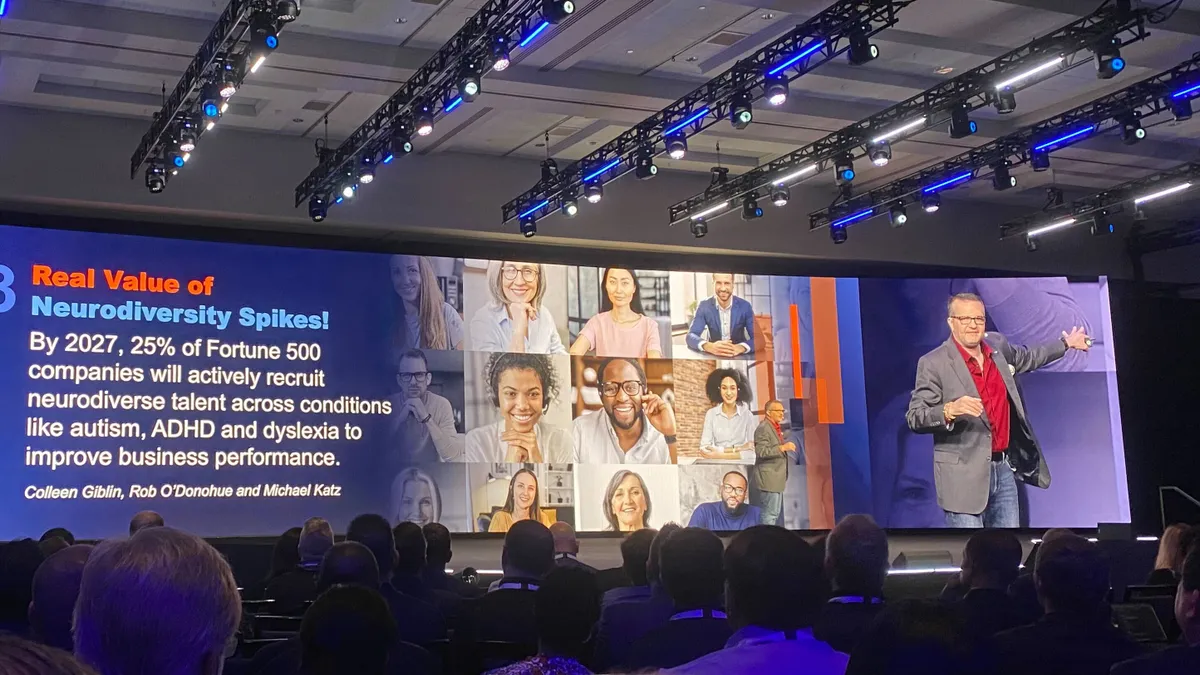ORLANDO, Fla. — Gartner's predictions for IT organizations in 2024 mostly focus on AI, a harbinger of what lies ahead for the rapidly developing technology.
While generative AI ushered in a wave of new tools and services, it also introduced uncharted risks and challenges that businesses will continue to process in the years to come.
“I think in 20, 25 years, when we look back, we are going to say that this is the year that everything changed,” said Leigh McMullen, distinguished VP analyst at Gartner, speaking Tuesday during the Gartner IT Symposium/Xpo in Orlando, Florida. “I don’t think that’s an exaggeration.”
Looking ahead, CIOs can expect generative AI to supercharge legacy modernization, shift geopolitical balance and motivate workers to unionize over the next few years.
Organizations need a robust data architecture and infrastructure to support generative AI workloads, but adopting the technology could help organizations speed up transformation efforts in other areas.
Here are three predictions on the future of AI pulled from Gartner’s top-ten list:
1. By 2027, GenAI tools will be used to explain legacy business applications and create appropriate replacements, reducing modernization costs by 70%.
Enterprise leaders shouldn't count on those savings yet, though.
“Generative AI is not going to be free,” McMullen said. “The amount of energy that it took to train ChatGPT is just about a gigawatt, which is about the amount of electricity that 1,000 U.S. households use in a day.”
Enterprises could find a new competitive advantage by turning to energy rationing or other strategies to reduce consumption, according to McMullen.
2. By 2027, the productivity value of AI will be recognized as a primary economic indicator of national power.
Widespread adoption of the technology could result in a geopolitical shift.
“I believe small states, like Australia, will be able to rise and become AI superpowers,” McMullen said.
In the U.S., where leading AI companies like OpenAI and Anthropic reside, there have been discussions in Congress and subcommittee hearings regarding the nation’s current position and what could happen if regulation curbs innovation. Governing bodies have made it clear they're paying attention to the balance.
It’s similar to the tightrope executives walk as they help employees find value in using generative AI tools, while also ensuring guidelines and acceptable use policies are followed.
“I implore you to take the decisions that you make today and in the future about generative AI very, very seriously,” McMullen said. “We are literally the last generation of managers who get to make those decisions.”
3. In 2026, 30% of workers will leverage digital charisma filters to achieve previously unattainable advances in their career.
Employees are starting to understand the advantages of using AI — even in social dynamics.
Features and services, like Nvidia’s Eye Contact effect, which adjusts a speaker’s eyes to simulate eye contact with the camera, can improve employers’ perception of a particular employee.
“For the first time in human history, there’s a technology innovation that’s going to benefit individual workers,” McMullen said. “Sure, technology has taken a lot of the drudge work out, but the people who typically profit from that are the enterprises themselves.”














